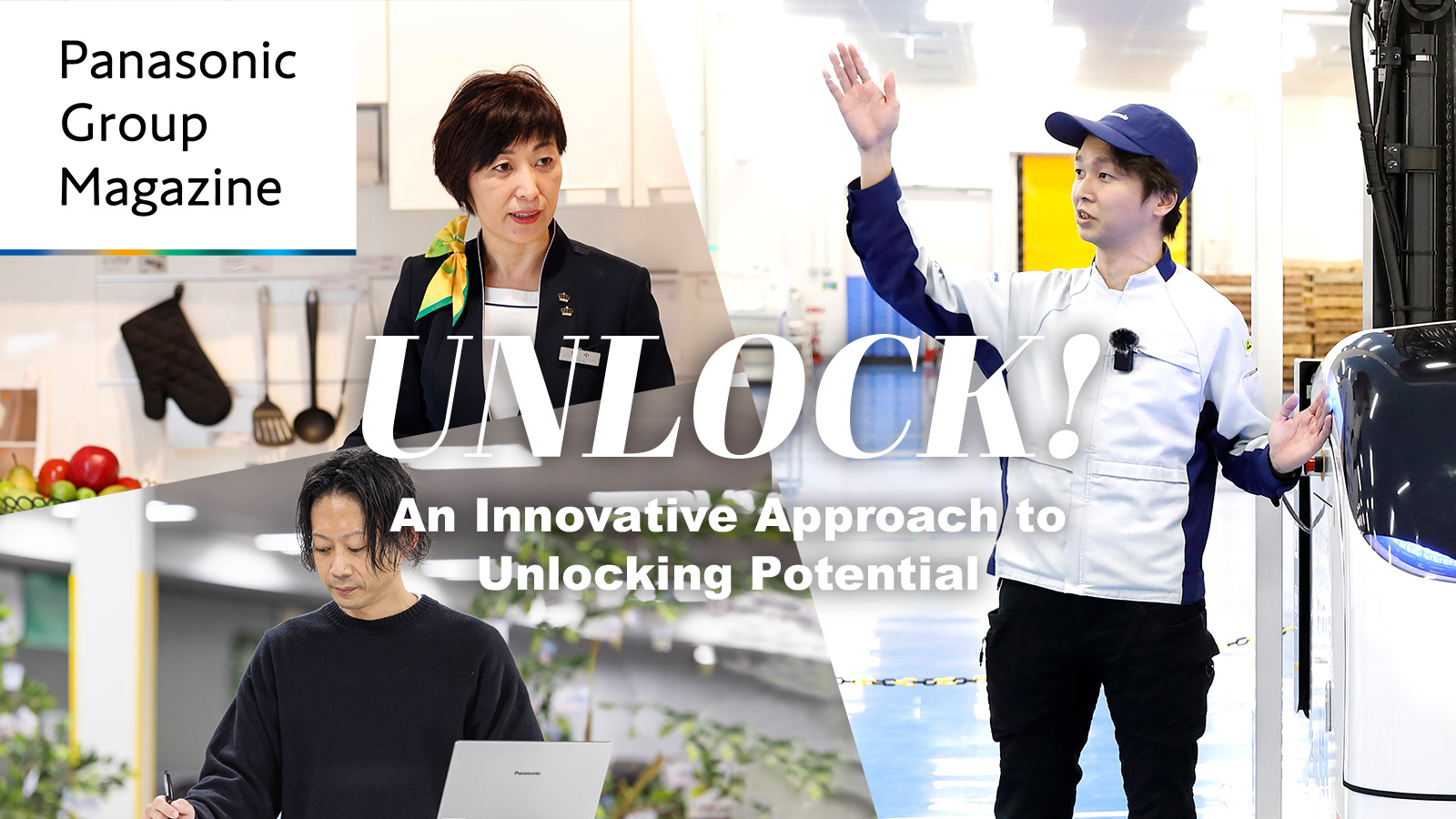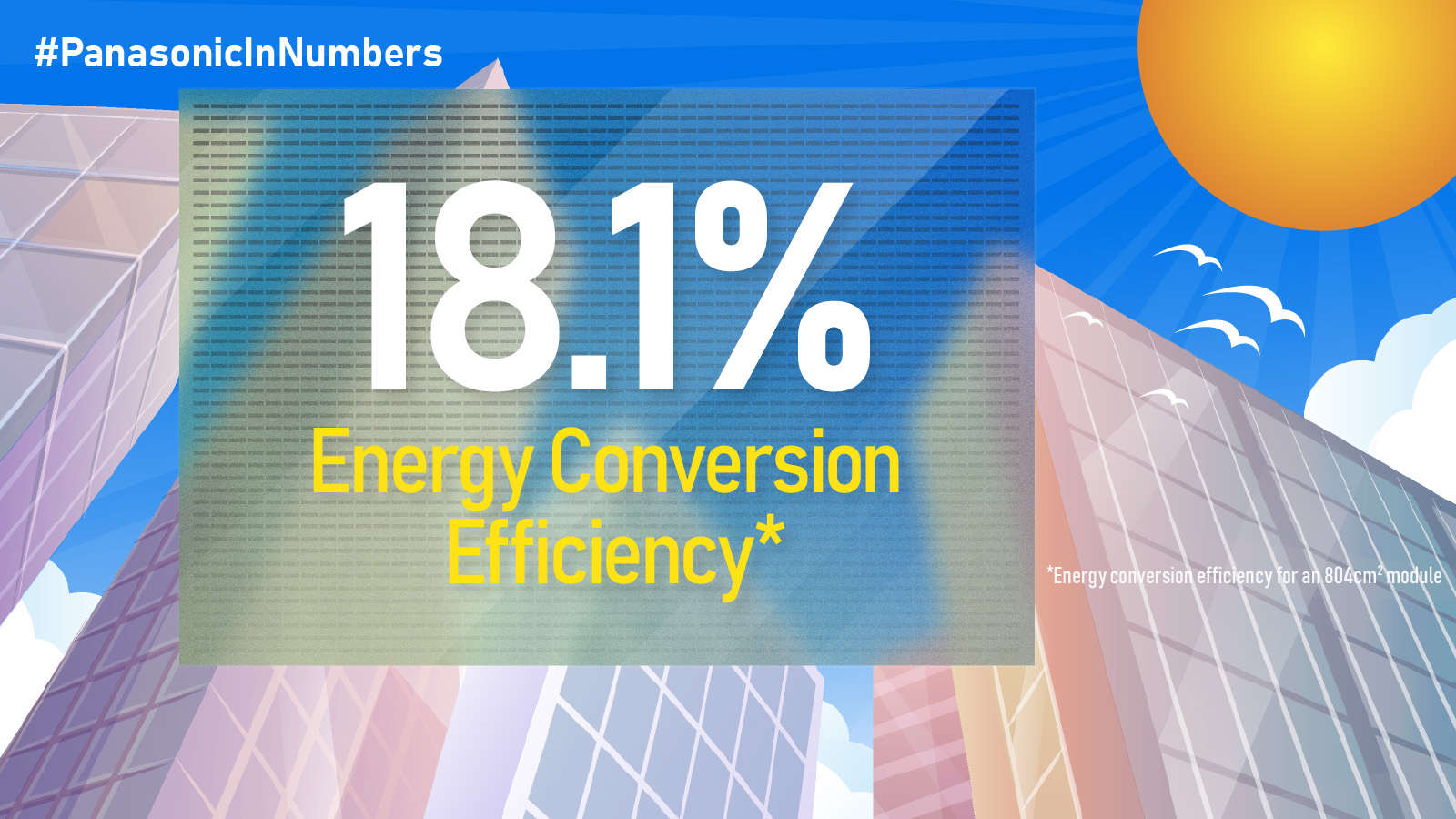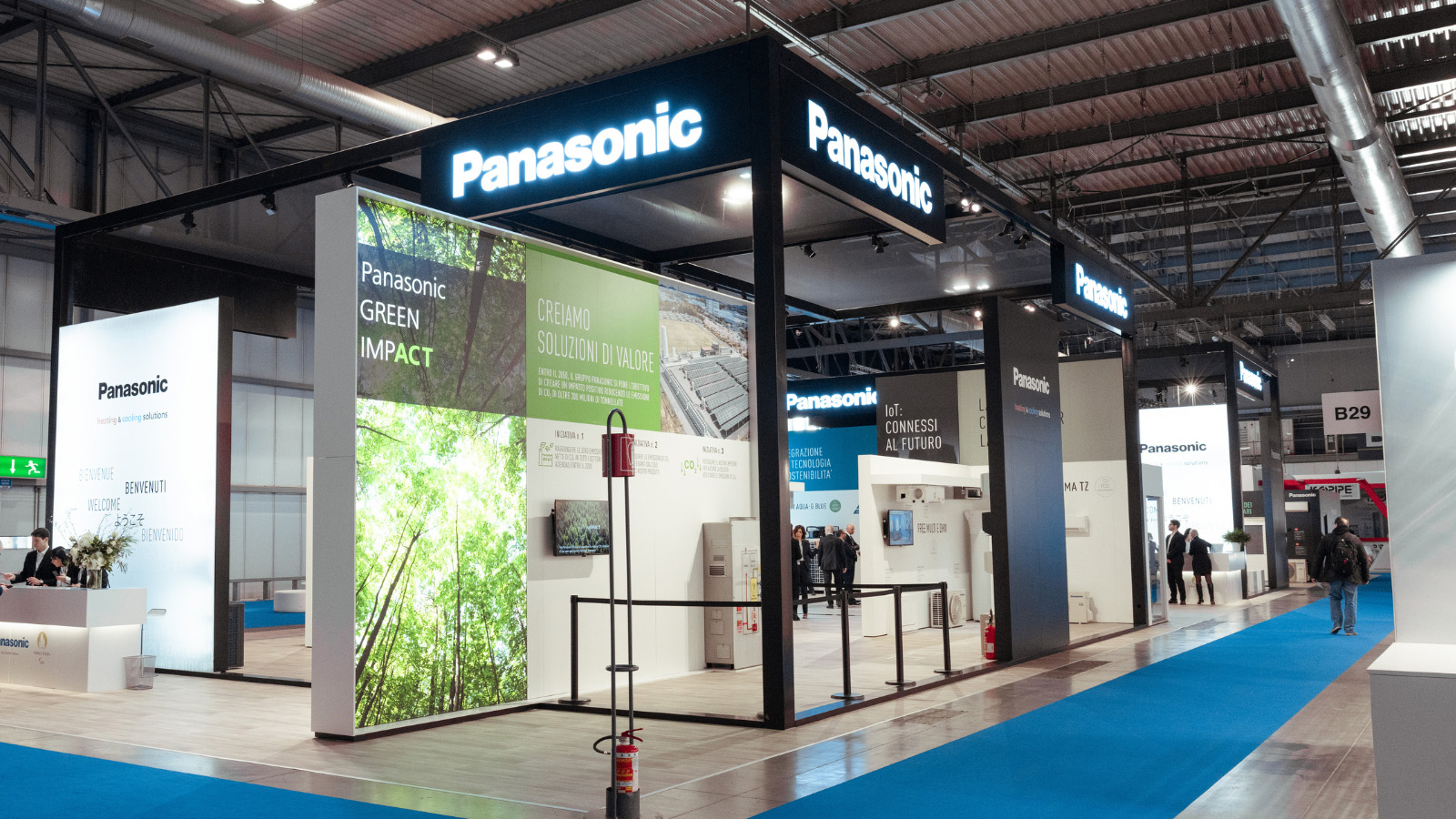Jan 09, 2009
Press Release
Panasonic Announces Annual Management Policy
Osaka, Japan (January 9, 2009) - Panasonic Corporation (NYSE symbol: PC) today announced its management policy for the fiscal year ending March 31, 2010 (fiscal 2010). After reviewing the progress the company made in fiscal 2009, Panasonic President Fumio Ohtsubo outlined the challenges the company faces and its determination to complete the final year of the GP3 mid-term management plan. Here is a summary of his speech delivered to company employees.
1. Review of fiscal year 2009
1) Growth in overseas sales
Panasonic currently expects that the company may not be able to achieve its goal of double-digit growth in overseas sales. During fiscal 2009, Panasonic focused on upper-income customers in BRICs and Vietnam.
2) Four strategic businesses (digital AV business, businesses providing comfortable living, automotive electronics business, and semiconductors and other devices businesses)
The four businesses may not be able to achieve their targets in the current economic condition. During fiscal 2009 the company started and implemented a variety of projects to expand sales.
3) Manufacturing innovations
Panasonic has made steady progress in its collaborative activities of its subcommittees including the promotion of the Itakona* application. The company also set up and strengthened the activities of New Business Promotion Subcommittee.
| * | The literal Japanese translation for the word Itakona is "plates and powders." An Itakona program essentially pursues cost optimization through the analysis of costs at the raw materials level, such as the metals and plastics used in components. |
4) Eco Ideas Strategy
Panasonic has been successfully reducing CO2 emissions as scheduled. With its Eco Ideas for everybody, everywhere, the company has encouraged the spread of environmental activities throughout the world.
2. Goals for fiscal year 2010
Goals for the next fiscal year have to take into account the current business environment. The company expects a tough business environment; global recession and shrinking demand triggered by the financial crisis coincide with the changes in market structure. The changes will include the expansion of emerging markets and a shift to lower-priced products.
Panasonic has cultivated the fruits of the restructuring made after fiscal 2002. However, the restructuring effects in growth and profitability are expected to disappear in fiscal 2010. The company needs to prepare for the future growth by achieving bold structural reforms and strengthening the company's management structure. Panasonic aims to move forward towards the goals set in the GP3 plan and get itself ready to leap ahead when the market recovers.
To be specific, the company will take the following steps:
1) Rebuilding management structure
i) Drastic structural reforms
Panasonic will carry out a radical review of its business selection and concentration by clarifying which businesses to expand and which to withdraw from. The company will streamline its operations with strong possibility of withdrawing businesses and products which have had negative earnings since fiscal 2007. In principle, the company will close down its overseas operating sites which fall under the criteria for withdrawal. Panasonic head office will also undergo a structural reform. The aim is to make it an organization that is "simple and easy to understand" with "a strategic investment function for the future growth," allowing for "streamlining and continuously improving productivity." In order to achieve this goal, Panasonic will redefine the head office operations into the following five functions: 1) management strategy; 2) external affairs; 3) brand strategy; 4) R&D and 5) group management support. The company will carry out the organizational reform from April 2009.
At the same time, the head office will set cost guidelines for each group. Based on the guidelines, streamlining will be implemented to return the savings to business domain companies and divisions. The head office will also make investment focused on new businesses and markets.
ii) Further strengthening cost competitiveness
Panasonic will stick to the basics of the Itakona application in every activity concerned with the manufacturing process. The company will make use of the collective wisdom beyond borders across job functions, and will work together to get closer to attainable theoretical costs. All Panasonic people, from the top to the employees should visit, see and put themselves in the front line of business and listen to the workers on-site.
Panasonic will promote and internalize the Itakona principle mainly through activities by the Manufacturing Subcommittee. By seeking economies of scale, thoroughly implementing the Itakona principle and carefully observing materials market conditions and exchange rates, the company will accelerate cost reductions in procurement. The company will also reinforce its Cost Busters Project to reduce fixed costs. Panasonic will make careful capital investment decisions and implement inventory management for the whole business including factories and distributors.
2) Preparing and taking action for growth
i) Concentrating on products
When manufacturing products, it is essential to have a customer viewpoint, secure safety and quality and pursue environment-friendliness. Fulfilling these requirements, Panasonic will seek to create products that only Panasonic can produce to offer additional values such as "super link," "super energy-saving" and "thorough universal design."
ii) Growth strategy focused on prioritized themes
• Expanding overseas sales
Panasonic will strive to retain double-digit growth in BRICs and Vietnam in fiscal 2010. By continuously introducing competitive products and boosting sales strength, the company will enhance its efforts to capture consumer demand in the affluent and upper-income customers. Panasonic will expand the line-ups of core products and develop products tailored to regional characteristics. In addition, the company will establish sales channels to respond to the market needs of each country and promote brand marketing strategy with new angles focused on these markets. Panasonic will also aggressively promote sales in the growing emerging markets other than BRICs and Vietnam.
• Four strategic businesses
Digital AV business/Flat-panel TVs - Panasonic will seek for growth above the industrial average, as well as taking measures to respond to sluggish market conditions. The company will reduce the capital investment in the fifth domestic PDP plant in Amagasaki to 210 billion yen from the originally planned 280 billion yen. Investment in the IPS Alpha's plant in Himeji, Japan will also be reduced to 235 billion yen from 300 billion yen. Accordingly, the total capital investment through 2012 will be reduced to 445 billion yen from 580 billion yen, a reduction of 135 billion yen.
Meanwhile, Panasonic has set a global sales target of 15.5 million units of flat-panel TVs for fiscal 2010, a 50% increase from the current fiscal year. In order to achieve the target, the company will make all-out efforts to improve the basic performance of its flat-panel TVs such as energy-saving and faster response time for moving pictures using the NeoPDPs and IPS Alpha LCD panels. At the same time, the TV lineups will be expanded with the number of basic models, doubling from four to eight types.
Panasonic aims to build relationships with the growing retailers such as so-called hyper retailers and warehouse club retailers in the U.S. and European markets, while aiming to further increase the number of product models by 50% in the emerging markets as part of its efforts to expand sales.
Businesses providing comfortable living - Panasonic will push forward with the four themes of Eco-lifestyle, Security, Lighting and Healthcare across the business domain companies, with a priority on producing results.
Panasonic will promote the home appliances business globally. It plans to introduce refrigerators and washing machines in Europe in March 2009. The company will launch products in the 17 European countries by the end of fiscal 2010 and will expand them subsequently into other European countries. In Asia, the company will seek to win the undisputed No.1 market share by taking such measures as expansion of product line-ups, developing production systems in the region and intensified point-of-sales marketing activities focused on ecology. These measures will be jointly promoted by the manufacturing and sales companies.
With regard to the overseas systems and equipment business, the company plans to develop product packages tailored to industrial customers with different business domain companies collaborating in this aim. The packages will be introduced in focused industries and markets. This additional business activity should help the company to expand its business overseas and reinforce its B-to-B business. In order to realize this goal, Panasonic will set up the Systems and Equipment Business Promotion Division (tentative name) in April 2009.
Semiconductors and other devices businesses - Panasonic will reinforce its three principles, "listen to the customer's voice," "create more 'black-box' technologies" and "strengthen cost competitiveness." Based on these principles, the company will develop highly-profitable key products, respond to demand for lower-priced products and launch an offensive in the emerging markets.
Automotive electronics business - Panasonic will reconstruct its business strategy in the light of the drastic changes in the business environment. The company will work on a thorough structural reform to get growth back on track, while strengthening its focus on growing business areas. To be specific, it will strive for receiving orders for automotive electronics equipment for the cars sold globally, expanding sales of consumer products in the emerging markets and creating a new in-vehicle system business focused on the environment, safety and security.
• Creating new businesses
Panasonic will start operating the New Business Promotion Support System in fiscal 2010. The head office will assist in creating new businesses by providing financial, technical and personnel assistance when the priority projects of the business domain companies and company-wide common projects are put on a commercial basis.
With regard to the Robot Business Project, which is one of the company-wide common themes, the company plans to develop it into three businesses in the work and labor, medical welfare and comfortable living areas. These businesses will be developed in line with the company's concept that robots should play an assisting role for people. Panasonic aims to build up its total global sales to over 100 billion yen in new businesses by 2015.
• Capital and business alliance with SANYO Electric and new strategic businesses
Panasonic and SANYO Electric officially signed the capital and business alliance agreement on December 19, 2008. Panasonic aims to acquire the majority of voting rights of SANYO through a tender offer bid. In order to form a close alliance with an eye on possible future reorganization, Panasonic and SANYO have set up a Collaboration Committee and started discussing a variety of issues. The energy-related businesses with high growth potential, in particular, will be added as Energy Solutions to the four strategic business areas set forth in the GP3 plan. The Energy Solutions business will be nurtured to become one of the pillars to support the company's future growth.
3) Strengthening environmental management
• Goals of Eco Ideas Strategy (fiscal 2010)
Eco Ideas for products - Panasonic aims to increase the number of the No.1 energy-saving products to 200 models. As a result, energy-efficient Panasonic products will account for 30% of the No.1 energy-saving products listed in the energy-saving catalog published by the Energy Conservation Center of Japan. Further more, Panasonic aims to eliminate low-ranking products from its line up.
Eco Ideas for manufacturing - Panasonic aims to reduce its global CO2 emissions by 300,000 tons from the level of fiscal 2007. CO2 emissions will be reduced in both total amount and per basic unit terms.
Eco Ideas for everybody, everywhere - Panasonic will step up its Love the Earth Citizens' Campaign, aiming to tailor its localized activities to the needs of each region.
3. Preparing for post "GP3" plan
Panasonic aims to become a more globalized company by completely exploiting its diverse resources of the Panasonic Group. Acting in the spirit of entirety - generating ideas for the entire household and aiming at the entire global market, Panasonic aspires to become the top global electronics company by creating ideas to make everyday life enjoyable. To accomplish the goal, the company needs to establish a management system for a global entity, build a business structure capable of putting the "entire house" concept into practice and carefully select new business areas that can drive new growth. Panasonic will diligently study all these challenges in fiscal 2010 to build a management framework that is sustainable beyond the post GP3 plan.
4. Management slogan for 2009
The company believes that a positive attitude is more important than anything else when facing a difficult situation. Difficult times provide precious opportunities for rebuilding the management structure in order to achieve further progress. Panasonic strives to take up this challenge, working in unison with all company's employees and sharing this positive spirit for 2009.
GP3 Plan - Global Progress, Global Profit, Global Panasonic
Rise to the Challenge!
About Panasonic
Panasonic Corporation is a worldwide leader in the development and manufacture of electronic products for a wide range of consumer, business, and industrial needs. Based in Osaka, Japan, the company recorded consolidated net sales of 9.07 trillion yen (US$90.7 billion) for the year ended March 31, 2008. The company's shares are listed on the Tokyo, Osaka, Nagoya and New York (NYSE Symbol: PC) stock exchanges. For more information on the company and the Panasonic brand, visit the company's website at http://panasonic.net/.
Disclaimer Regarding Forward-Looking Statements
This press release includes forward-looking statements (within the meaning of Section 27A of the U.S. Securities Act of 1933 and Section 21E of the U.S. Securities Exchange Act of 1934) about Panasonic and its Group companies (the Panasonic Group). To the extent that statements in this press release do not relate to historical or current facts, they constitute forward-looking statements. These forward-looking statements are based on the current assumptions and beliefs of the Panasonic Group in light of the information currently available to it, and involve known and unknown risks, uncertainties and other factors. Such risks, uncertainties and other factors may cause the Panasonic Group's actual results, performance, achievements or financial position to be materially different from any future results, performance, achievements or financial position expressed or implied by these forward-looking statements. Panasonic undertakes no obligation to publicly update any forward-looking statements after the date of this press release. Investors are advised to consult any further disclosures by Panasonic in its subsequent filings with the U.S. Securities and Exchange Commission pursuant to the Securities Exchange Act of 1934.
The risks, uncertainties and other factors referred to above include, but are not limited to, economic conditions, particularly consumer spending and corporate capital expenditures in the United States, Europe, Japan, China and other Asian countries; volatility in demand for electronic equipment and components from business and industrial customers, as well as consumers in many product and geographical markets; currency rate fluctuations, notably between the yen, the U.S. dollar, the euro, the Chinese yuan, Asian currencies and other currencies in which the Panasonic Group operates businesses, or in which assets and liabilities of the Panasonic Group are denominated; the ability of the Panasonic Group to respond to rapid technological changes and changing consumer preferences with timely and cost-effective introductions of new products in markets that are highly competitive in terms of both price and technology; the possibility of not achieving expected results on the alliances or mergers and acquisitions; the ability of the Panasonic Group to achieve its business objectives through joint ventures and other collaborative agreements with other companies; the ability of the Panasonic Group to maintain competitive strength in many product and geographical areas; the possibility of incurring expenses resulting from any defects in products or services of the Panasonic Group; the possibility that the Panasonic Group may face intellectual property infringement claims by third parties; current and potential, direct and indirect restrictions imposed by other countries over trade, manufacturing, labor and operations; fluctuations in market prices of securities and other assets in which the Panasonic Group has holdings or changes in valuation of long-lived assets, including property, plant and equipment and goodwill, deferred tax assets and uncertain tax positions; future changes or revisions to accounting policies or accounting rules; as well as natural disasters including earthquakes and other events that may negatively impact business activities of the Panasonic Group. The factors listed above are not all-inclusive and further information is contained in Panasonic's latest annual report on Form 20-F, which is on file with the U.S. Securities and Exchange Commission.
Media Contacts:
- Akira Kadota (Japan)
- International PR
- (Tel: +81-3-3578-1237)
- Panasonic News Bureau (Japan)
- (Tel: +81-3-3542-6205)
- Jim Reilly (U.S.)
- (Tel: +1-201-392-6067)
- Anne Guennewig (Europe)
- (Tel: +49-611-235-457)
Investor Relations Contacts:
- Kazuo Sasaki (Japan)
- Investor Relations
- (Tel: +81-6-6908-1121)
- Yoichi Nagata (U.S.)
- Panasonic Finance (America), Inc.
- (Tel: +1-212-698-1362)
- Hiroko Carvell (Europe)
- Panasonic Finance (Europe) plc
- (Tel: +44-20-7562-4400)
Banner area begins from here.
The content in this website is accurate at the time of publication but may be subject to change without notice.
Please note therefore that these documents may not always contain the most up-to-date information.
Please note that German, French and Chinese versions are machine translations, so the quality and accuracy may vary.






